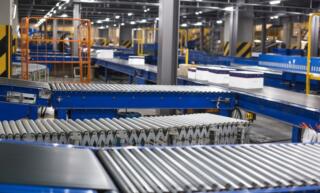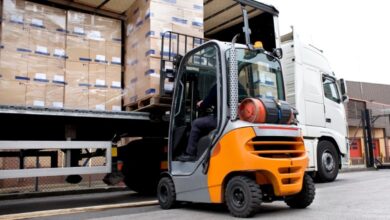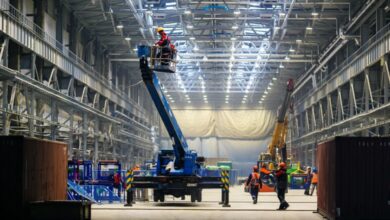
How To Prevent Downtime With Conveyors Systems
Downtime in conveyor systems can significantly impact productivity and operational efficiency, leading to costly delays and disruptions. Maintaining seamless operation is essential in industries where material handling is critical, such as manufacturing, warehousing, and logistics.
Let’s look at how to prevent downtime with conveyor systems and ensure uninterrupted workflow.
Regular Maintenance
Proper and timely maintenance is crucial to prevent downtime in conveyor systems. It involves regularly inspecting and servicing all components, including belts, motors, bearings, rollers, and chains. These routine checkups help identify any potential issues before they escalate into major problems. By scheduling regular maintenance, operators can detect signs of wear and tear and replace or repair parts before they fail.
In addition to conducting routine checks, it’s also essential to follow the manufacturer’s recommended maintenance schedule for each component. This check includes lubricating moving parts, tightening loose bolts and connections, and replacing worn-out or damaged parts as needed. Following these maintenance guidelines can significantly extend the lifespan of conveyor systems and reduce the risk of unexpected downtime.
Proper Training for Operators
Another crucial factor in preventing downtime is ensuring that operators are properly trained to operate and maintain conveyor systems. Improper usage or handling of equipment can lead to breakdowns, which can result in costly repairs and extended periods of downtime. It’s essential to provide comprehensive training to all team members who will be operating or working around conveyor systems.
The training should cover basic operation procedures, safety protocols, maintenance procedures, and troubleshooting techniques. Equipping operators with the necessary knowledge and skills enables them to identify potential issues early on and take appropriate action to prevent downtime.
Use High-Quality Components
Investing in high-quality components may seem like an added expense in the short term, but it can save significant costs and downtime in the long run. High-quality parts are less likely to fail or malfunction, reducing the risk of unexpected breakdowns and downtime. Choosing components from reputable manufacturers also ensures that they are built to withstand heavy usage and harsh environments.
When selecting conveyor system components, consider factors such as durability, reliability, and compatibility with your existing equipment. It’s also essential to regularly check for signs of wear and tear on these components and replace them as needed to avoid potential failures.
Implementing Proper Safety Measures
Safety should be a top priority when it comes to preventing downtime in conveyor systems. Not only do proper safety procedures protect workers from injuries, but they also help prevent damage to equipment and avoid costly downtime. Some essential safety measures to implement include lockout/tagout procedures, proper guarding of moving parts, emergency stop buttons, and regular training on safety protocols.
Monitoring and Real-Time Reporting
Real-time monitoring and reporting can help identify potential issues with conveyor systems before they cause extended periods of downtime. By implementing sensors and software that track performance indicators such as motor temperature, belt speed, and power consumption, operators can receive alerts or notifications when operating conditions deviate from expectations.
These real-time insights allow for proactive maintenance and troubleshooting, preventing unexpected downtimes due to failure or malfunctioning components.
Downtime in conveyor systems can have a significant impact on productivity, efficiency, and profitability. However, understanding the dos and don’ts of conveyor safety and maintenance can go a long way in preventing unexpected downtime. By implementing regular maintenance, providing proper training to operators, investing in high-quality components, and implementing safety measures and real-time monitoring, businesses can ensure uninterrupted workflow and maximize the lifespan of their conveyor systems.






